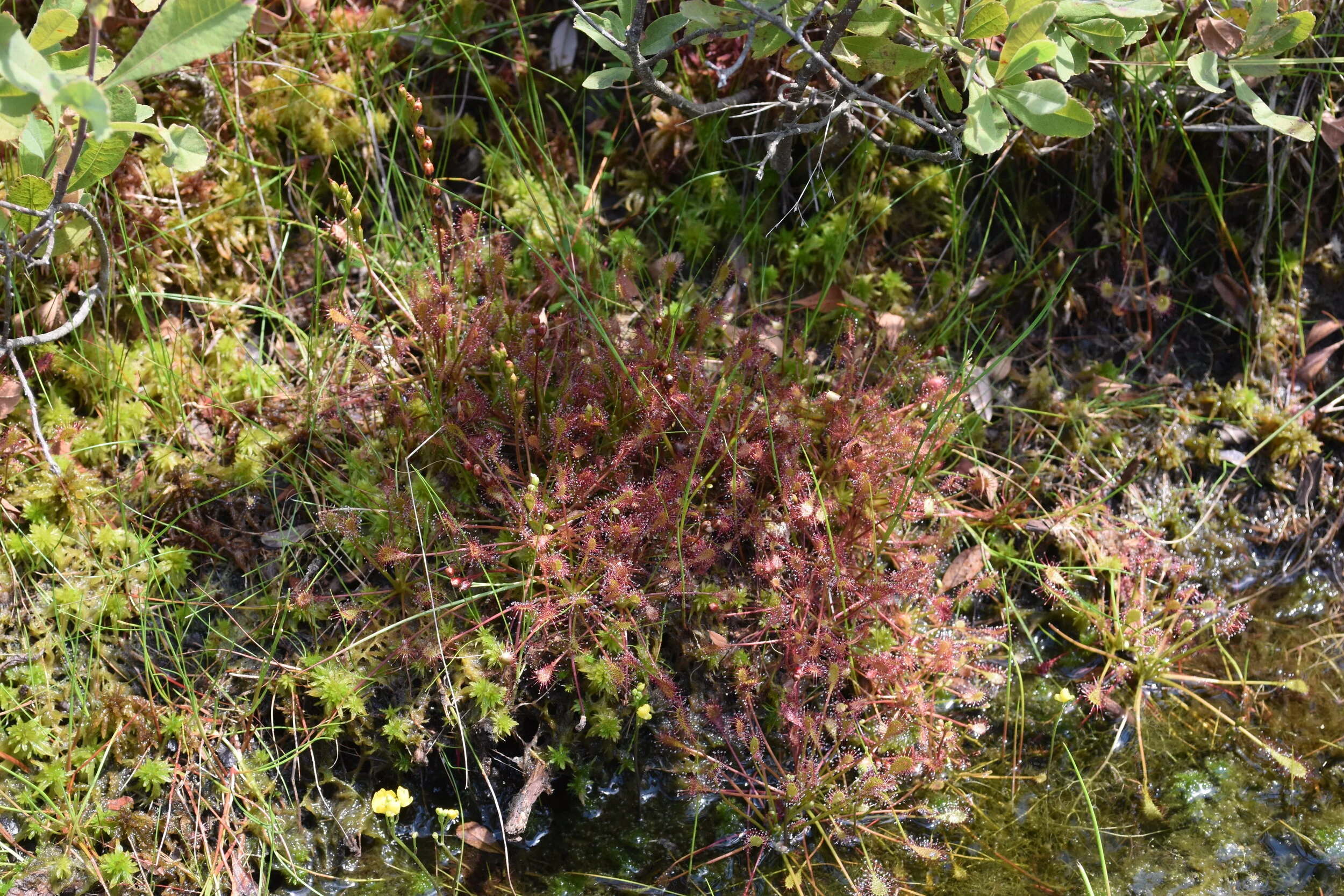DROSERACEAE
The Droseraceae Salisb., consists of three genera, Aldrovanda L. (waterwheel plant), Dionaea Sol. ex J. Ellis (Venus flytrap), and Drosera L. (sundew), which include about 155 species. With the exception of the aquatic Aldrovanda, the members of the family are terrestrial and are typically occupy sites such as bogs and fens where there are very poor soil conditions. The largest genus, Drosera, contains about 152 species and these are both annual and perennial. In Texas there are three species of Drosera which can be found on bare soil in exposed damp sites such as roadsides, swales, and trails.
Capture Mechanism: The leaves of these plants are usually arranged in a basal rosette, and the upper leaf surfaces are covered with sticky, gland-tipped trichomes (plant hairs) that entrap and digest insects and other small prey.
Drosera brevifolia Pursch. (Synonyms: Drosera annua E.L. Reed, Drosera leucantha Shinners)
Distribution: central and southeastern United States, southern Mexico to Belize, Cuba, southern Brazil to northeastern Argentina
Flower and leaves of D. brevifolia. Copyright: Skip Pudney
Drosera capillaris Poir.
Distribution: tropical and subtropical Americas
Drosera intermedia Hayne
Distribution: Europe to Turkey, North America to eastern Brazil

